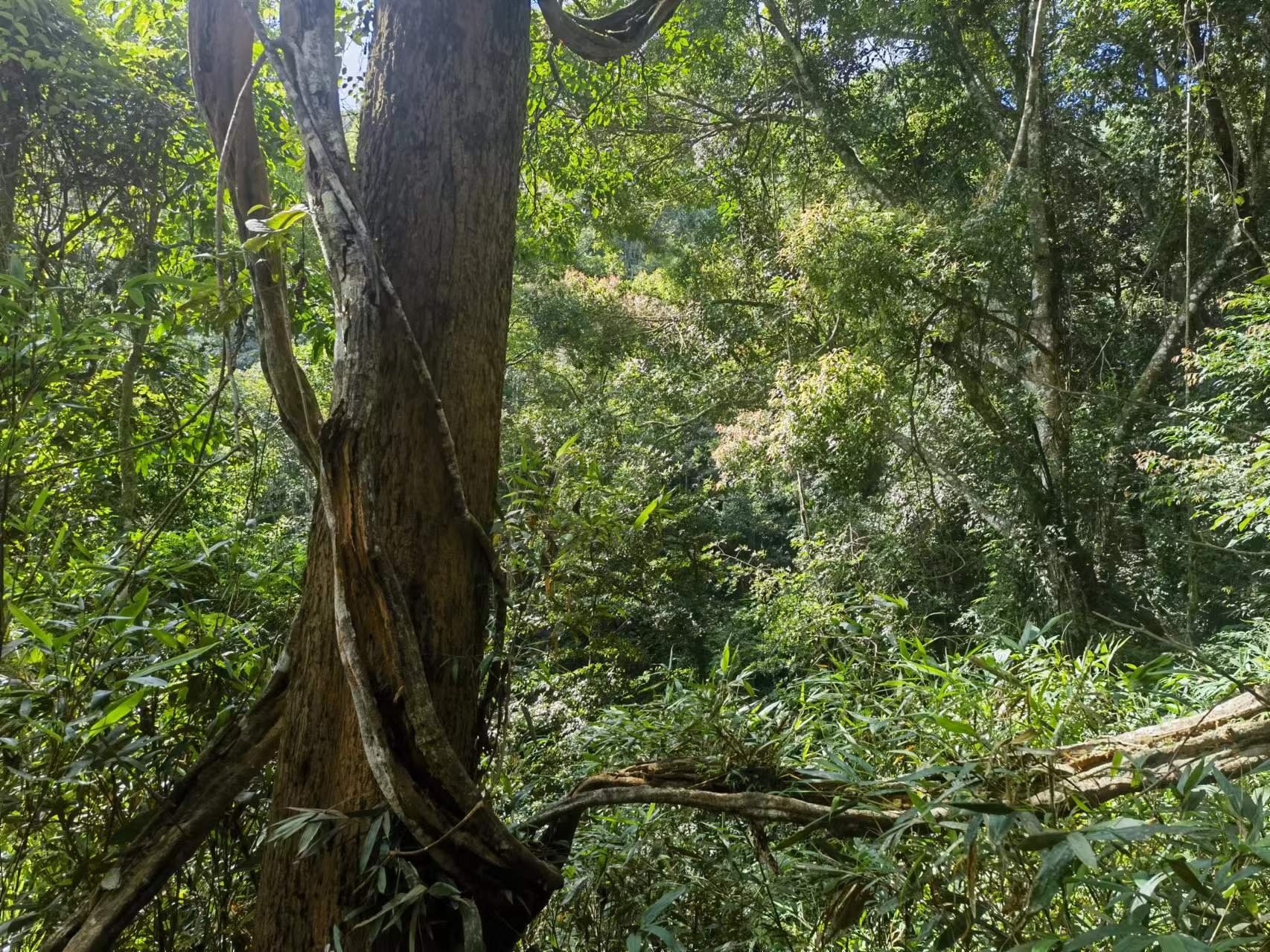Lianas are woody climbers that use trees for mechanical support but have their own root systems. They are exceptionally abundant woody growth forms in tropical and subtropical forests. Due to natural or anthropogenic disturbance, the abundance and biomass of lianas are on rise. Over the past two decades, liana ecology studies have rotated around their impacts on forest ecosystem functioning while lianas are alive. However, the role of dead lianas in forest ecosystems has been little studied and is poorly understood.
In a study published inGlobal Change Biology, researchers from Xishuangbanna Tropical Botanical Garden (XTBG) and their collaborators discussed the effects of lianas on forest biogeochemistry during their lives and after lives. They argued that lianas leave a lasting legacy in terms of altered carbon and nutrient cycling, both while alive and after death.
As the major woody components of forests worldwide, lianas and trees coexist, but they occupy different positions within functional trait space because of their different ecological strategies. Lianas rely on trees for mechanical support. Consequently, trees and lianas have evolved highly divergent stem, leaf, and root traits.
The researchers found that the trait divergence may persist after death,into the afterlives of these organs(leaves, stems, and roots), leading to divergent effects on forest biogeochemistry. They introduced a conceptual framework combining horizontal, vertical, and time dimensions for the effects of liana proliferation and liana tissue decomposition on ecosystem carbon and nutrient cycling.
They also presented a summary comparing available chemical traits of the two growth forms and across different tissues or organs. Afterwards, they presented a scheme of some important knowledge gaps in liana decomposition ecology, including accurate estimation of liana contribution to litterfall, impact of herbivores on liana leaf decomposition, afterlives of different organs of lianas, effects of morpho-anatomical modifications of liana stems for climbing on stem afterlives, etc.
The researchers suggest that the afterlives of lianas can potentially serve as a model for ecological studies, by gathering and analyzing empirical data on liana afterlife contributions to forest biogeochemistry. Such studies concerncomplementarity effects, phylogenetic effects, and position effects (grounded vs. suspended), etc.
"Such studies will increase our understanding of the contribution of lianas to terrestrial biogeochemical cycling, and help predict the effects of their increasing abundance," said Gbadamassi Dossa , first author of the study.
Contact
Gbadamassi G. O. Dossa Ph.D
Key Laboratory of Tropical Forest Ecology, Xishuangbanna Tropical Botanical Garden, Chinese Academy of Sciences, Mengla, Yunnan 666303, China
E-mail: dossa@xtbg.org.cn
Published: 12 April 2024

Trees and lianas in tropical forest. (Image by Gbadamassi G. O. Dossa)

